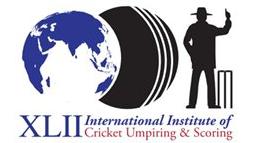Laws of Cricket: Pitches and playing areas

Many times on the pitch (and after the game) we have come to discuss whether a controversial situation should be allowed or not. There are precious few players with a deep enough understanding of the laws for our arguments to be resolved, but many times it's the players who also act as umpires. Now we can consult a team of expert experienced umpires for the answers to those tricky questions.
You can submit your own questions to the umpires here.
"We played a game on a very odd pitch - a real ‘sticky wicket’. It did nothing to assist the quicker bowlers – quite the reverse in fact but, with the spinners operating, it was a different story. The ball did the most extraordinary things, sometimes appearing to hold up on the surface, then shooting along the ground, at other times turning ‘square’. Both sides reckoned this pitch was unplayable, but the umpires wouldn’t change it. Why?"
'Unplayable’ is not the same as ‘unreasonable or dangerous’, which are the only criteria the umpires use in deciding whether play can continue. You imply that no-one was likely to be injured because of what the pitch or the ball were doing. Umpires consider whether there is an ‘obvious and foreseeable’ risk of injury. On this pitch, it seems there was no such risk!
Law 7.4 The pitch (Open Learning Manual Page 24)
Sweeping means the removal of debris from the pitch by means of sweeping with brooms and brushes.
Under the Laws the pitch must be swept clear of debris before it is rolled - to prevent any damage caused by debris being pushed into the surface by the action of the roller.
The pitch should also be swept at every interval, except drinks - the groundsman will usually ensure that the creases are re-marked then, too.
Law 10.2 Preparation and maintenance of the playing area (Open Learning Manual Page 28)
Want more tips on how to umpire? Get instant access to The Umpiring Survival Guide on PitchVision Academy. Now with a free bonus 91 page quizbook.
- Login to post comments


Comments
What about if sweeping itself will cause damage to the pitch. Should other means of clearing the pitch be used?
Do you have a specific example in mind Peter?
I stood in a match in Trinidad in the West Indies and between innings the groundsman while attempting to clear the pitch of debris by sweeping the pitch was so dry that pieces began to flake off so I had to tell him do not sweep anymore. He had to pick up some of the particles on the pitch before rolling. Therefore while sweeping is mentioned the word to consider is "cleared" not necessarily by sweeping.
Interesting point, I have never seen anything like that. It seems you used the most common sense solution.